- Home
- Alison Weir
Queen Isabella Page 3
Queen Isabella Read online
Page 3
Isabella spent her childhood in the royal palaces around the Île de France and, of course, in Paris, at the Louvre, then a moated château, and the Palace de la Cité, which was rebuilt by Philip IV. (The Palais de Justice now stands on the site.) Very little is known of her daily life during these early years. A few grants to her are recorded,21 and, probably quite early on, a lady called Théophania de Saint-Pierre was appointed her nurse; Isabella became much attached to her, and Théophania would accompany her to England and remain with her for many years.
Isabella apparently received a good education for her time: she was lucky enough to be taught to read, and her love of books remained with her throughout her life. There is no evidence that she ever learned to write, although it is quite possible.22 Above all, she must have grown up with a strong sense of her status and importance as the daughter of Europe’s most powerful monarch and the future wife of the Prince of Wales, whose father was nearly as powerful. Promised when she was four, she could hardly have remembered a time when she was not aware that she would one day be Queen of England. Moreover, as the great-granddaughter of Saint Louis, she would certainly have been raised to believe in the sanctity of the royal House of Capet to which she belonged and its superiority over all other ruling dynasties. She may well also have cherished the naive expectation that all kings were like her father.
Although Isabella’s childhood was privileged, it was overshadowed by war and by the quarrel her father waged with the Pope. She would have heard of Philip’s envoys’ physical assault on the violent and intransigent Boniface VIII in September 1303 and would have learned—doubtless to her distress—how the outraged Pontiff excommunicated her father the very next day. Even more shocking, later that month, Boniface died as a result of the assault. Fortunately for France, the election of a compliant elderly Frenchman, Clement V, in 1305 paved the way for a reconciliation, and in 1309, under pressure from Philip, Clement moved the seat of the Papacy from Rome to Avignon in southern France, where it was to remain for nearly seventy years, in thrall to the kings of France.
Meanwhile, in April 1305, when Isabella was not quite ten, her mother had died at Vincennes, aged only thirty-two. One French chronicler23 accused her husband of poisoning her, but that is hardly credible, for Philip the Fair was grief-stricken at Queen Jeanne’s passing, and his suffering was manifestly evident as he followed her funeral cortege to the Abbey of Saint-Denis, near Paris. There is no record of Isabella’s being present. Jeanne was succeeded by her eldest son, Louis, who became King of Navarre. After her death, Philip remained faithful to her memory and never remarried, which was exceptional in an age in which royal marriages could secure valuable political advantages.
With Queen Jeanne’s steadying influence removed, the French court lost much of its gravitas. The King’s three young daughters-in-law now emerged as the leaders of fashionable society, and they were flighty, mischievous girls, intent only on pleasure. Soon, the court was plunged into a hectic round of fetes, dancing, and novel diversions, and moralists professed themselves shocked at the new fashions promoted by these princesses, who, along with other fripperies, set a trend for daringly slit skirts.
In the months after the Queen’s death, Pope Clement began urging Edward I to press on with plans for his son’s marriage to Isabella, and on 15 October, the Prince of Wales authorized the English envoys to conclude the contract.24 There was talk of a proxy wedding at Lyons, to coincide with the new Pope’s coronation there,25 and on 11 November, Philip empowered Isabella to appoint her proxies.26 The Pope issued the necessary dispensation for the marriage on 27 November,27 and on 3 December, at the Louvre, Isabella named her proxies; they were her uncle, Louis of Evreux, Gilles de Saint Pol, and the Count of Dreux.28 Yet there is no record of the proxy marriage ever taking place. The evidence suggests that it was prevented by further disputes over Gascony.
Still the tortuous preliminaries dragged on. In 1306, Clement sent Cardinal Peter the Spaniard to England to negotiate the final arrangements for the union between the Prince of Wales and “the fair maiden”29 and expressed the hopeful opinion that peace between England and France was imminent.30 Cardinal Peter was received by Edward I at Carlisle on 12 March 1307, and on the sixteenth, the King gave his formal consent to the union. When Parliament met at Easter at Carlisle,31 the marriage was unanimously approved, and practical preparations for it were immediately put in hand. In late April, Prince Edward was supposed to go to France to marry Isabella at Poitiers; he even traveled to Dover and waited there nine days for his father’s order to embark, but it never came.32 Instead, the Prince was summoned to Scotland to assist his father in the Scottish campaign.33 Apparently, the King was having doubts that this marriage would bring the lasting peace for which everyone was hoping.34 He evidently had further thoughts, however, for two months later, shortly before he died on 7 July 1307, he belatedly commanded his son to marry Isabella. The next day, the Prince of Wales succeeded him as King Edward II.
The new King had shown no interest whatsoever in his coming marriage. There is no record of his sending any letter or gift to his future bride or even showing any curiosity about her. However, if he reneged on the marriage treaty, he stood to lose Gascony, and with Scotland in turmoil, he could not afford to fight a war on two fronts. Immediately after his accession, therefore, he dispatched the Bishops of Durham and Norwich and the Earls of Lincoln and Pembroke to France to conclude the negotiations. They returned home with enthusiastic opinions of Isabella’s beauty, and some chroniclers accuse Edward of being so eager to marry her that he abandoned his chances of conquering Scotland in his haste.35 However, as will be seen, Edward had far more pressing personal concerns at this time.
Late in August, King Philip ordered his brother, Louis, Count of Evreux, to enter into negotiations with the English, and by 24 September, representatives of Evreux had arrived in England; the Count was already in correspondence with King Edward.36 In October, Parliament voted funds for the coming royal wedding and the coronation of the King and Queen that was to follow, and on 6 November, the King sent his envoys back to France to appoint a day for the nuptials and make the final arrangements.37
Four days later, Edward gave orders for preparations for his journey to France;38 the wedding ceremony, which he wanted to take place at Boulogne;39 and the reception of his bride in England. At the Palace of Westminster, he had the royal lodgings restored, the gardens freshly turfed with new trellises erected, the fish ponds cleaned and restocked, and the nearby “Queen’s bridge,” a pier on the Thames, repaired. A royal ship, The Margaret of Westminster, was commissioned to bring the new Queen home; Edward had it repainted and refitted, and he himself designed wardrobes and butteries inside it for his bride”s belongings.40 He also ordered tapestries embroidered with the royal leopards and Gaveston’s heraldic eagles for the coronation.41
Meanwhile, at the instance of the Pope, Philip agreed to the wedding’s taking place at Boulogne in January.42 He had a well-known devotion to Our Lady of Boulogne, and the location would be convenient for the English.43 By now, Isabella was busy with her trousseau.44
These happy and auspicious plans were overshadowed in France by the mass arrest of about two thousand Knights Templar, on the King’s orders, on 13 October. All over France, members of this monastic order, the Knights of the Temple of Solomon, founded in 1119 to protect pilgrims visiting the Holy Land, were taken into captivity on charges of heresy, fornication, and worse, and their property was immediately sequestered by the Crown. It was not, of course, coincidental that the Templars had grown fabulously rich over the centuries and that King Philip was again desperately in need of funds. For the next seven years, the Templars in France would be accused of heresy, idolatry, sodomy, sacrilege, bestiality, and various other vile practices and interrogated, tortured, tried, and sometimes burned at the stake. Philip’s treatment of the Templars paved the way for their condemnation by the Pope and the dissolution of the Order.
In England, in December
1307, Edward II gave offense to his future father-in-law by proclaiming that the charges against the Templars were unfounded, but just over a week later, he changed his mind and ordered the arrest of all members of the Order in his realm.45 On 10 January 1308, the Order of the Temple was suppressed in England, too.
Shortly afterward, the English envoys returned from France, and on 22 January, King Edward set sail from Dover for Boulogne to marry Isabella.
Edward II was the youngest of the four sons of Edward I and Eleanor of Castile, and when he was born at Caernarvon Castle on 25 April 1284, just after his father’s conquest of Wales, his one surviving elder brother, Alfonso, then aged ten, was heir to the English throne. It was only when Alfonso died of a fever the following August that the four-month-old Edward became his father’s heir apparent. According to a famous legend, Edward I presented his newborn son on a shield to the Welsh as their prince, having promised them a native-born ruler; but this is a myth. Young Edward was not created Prince of Wales until February 1301, and the first account of his presentation was recorded as late as 1584 by John Stow, the Elizabethan antiquarian.
The Prince was born into a large family—Queen Eleanor presented her husband with sixteen children—but most of his siblings had either died young or been married off by the time he was born. Of those still in England, Joan of Acre (born 1272) was married in 1290 to Gilbert de Clare, Earl of Gloucester; Mary (born 1278) became a nun at Amesbury Abbey, Wiltshire, at the age of seven; and Elizabeth (born 1282) became in 1302 the wife of Humphrey de Bohun, Earl of Hereford and Essex. In 1286, Edward’s parents went to Gascony for three years, leaving him in England; his younger sisters Beatrice and Blanche were both born there but died young.
Edward spent most of his early years at the royal manor of Langley near Saint Albans, which became his favorite residence. When his father and mother returned to England in 1289, they must have seemed like strangers to the young Prince. King Edward, now fifty years old, was a terrifying and remote authoritarian figure, and Queen Eleanor was already ailing: she died the following year. Edward of Caernarvon would therefore have been more or less emotionally isolated during his early childhood and was probably closer to his nurse, Alice Leygrave, than to anyone else; she was to remain in his service for twenty-nine years.46 The forty-five-year gap between his father and himself cannot have made for closeness or understanding on either side.
Edward I was one of England’s greatest medieval kings. “In build, he was handsome and of great stature, towering head and shoulders above the average.” A drooping eyelid and a slight stammer or lisp did not detract from his aura of majesty, nor did he “lack a ready power of persuasion in argument.”47 He was autocratic, forceful, fierce-tempered, fearless, and full of boundless vigor. A born leader and a talented and dynamic ruler, he could still be unscrupulous, ruthless, cruel, and even violent. Even his second wife, Marguerite of France, who loved and respected him, conceded that he was “terrible to all the sons of pride.”
Under Edward I, the prestige and authority of the English Crown reached its medieval zenith. In every respect, he personified contemporary ideals of kingship. A distinguished warrior, he inflicted a devastating conquest upon Wales, then spent the rest of his reign relentlessly trying to conquer Scotland. He streamlined the royal administration, enforced the royal prerogative, implemented far-reaching legal reforms, and promoted parliamentary government. He understood the need to curb the power of the great feudal lords, and by sheer force of character and judicious marriage alliances, he kept his barons firmly under control. It was only toward the end of the reign that aristocratic opposition to his policies grew vociferous, yet he would not brook any criticism or make concessions or changes.
Edward had married his first wife, Eleanor of Castile, in 1254, when he was fifteen and she only ten. They were devoted to each other, and when she died in November 1290, he was shattered by grief and retired for a time from public life. “My harp is turned to mourning,” he wrote. “I loved her in life; I cannot cease to love her in death.” In her memory, he built thirteen stone crosses to mark the route taken by her funeral procession from Harby in Nottinghamshire to Westminster Abbey, where a fine tomb with a bronze effigy still marks her resting place.
Edward I could show affection to his parents, his siblings, and his wives, but his children learned not to provoke his rages. On one occasion, he became so angry with one of his daughters that he pulled off her wedding circlet—she was about to be married—and threw it on the fire. Hundreds of his letters to his heir survive, and they are full of hectoring advice or stern reproofs. Yet his generosity was well known, and he did have a sense of humor. In his rare leisure time, he enjoyed hunting, hawking, and tournaments. He was also a pious and cultivated man, literate and well informed.
Since 1290, when he had been asked to arbitrate among thirteen claimants to its vacant throne, Edward I had cherished ambitions to annex Scotland to the English Crown and to rule over a united kingdom. But his ambitions were continually frustrated by the resilience and tenacity of the Scots under the leadership of two great national heroes, William Wallace—whom Edward executed in 1305—and Robert Bruce, one of the most accomplished of military tacticians and an expert at guerrilla warfare. Yet Edward I was firm, even obsessive, in his resolve, and undeterred. When, in 1306, Bruce had himself crowned King of Scots, Edward declared him a traitor, dispatched an army, and drove him into hiding. Thereafter, the war dragged on bitterly and expensively until the end of the reign, by which time the English held every major fortress in Scotland. But Bruce was a doughty and intrepid fighter, and there was no end to the conflict in sight.
Edward of Caernarvon rarely enjoyed good relations with his father. Bound to emulate his magnificent sire and live up to his expectations, he was just not capable of doing so. At first, his lack of the requisite qualities was not apparent: he attended council meetings, fought ably on four campaigns in Scotland, and carried out ceremonial duties quite efficiently at home. But all too soon, he came under the influence of a young man whose name would soon become infamous.
Mindful that his son lacked companions of his own sex and age group, the King selected ten young men to be in constant attendance on the Prince. One was Piers Gaveston, the son of a leading Gascon baron who had fought for Edward I in France and Wales. Gaveston was born at Gabaston in Béarn; he first came to England in 1297 with his father, and in 1300, after serving in two campaigns in Scotland and impressing the King with his courtly demeanor, was placed in the Prince of Wales’s household as one of his squires.48 Before long, he had become “the most intimate and highly favoured member” of it.49
Piers was a handsome boy about the same age as the Prince;50 he was graceful, active, intelligent, and skilled in arms.51 Of his courage there is no doubt, nor of his boundless self-confidence. He was ambitious, indiscreet, greedy, extravagant, and arrogant: his pride, it was said, would have been intolerable even in a king’s son. But that was later, after he had become notorious. The chroniclers were also fond of deriding Gaveston’s “base and obscure” birth,52 even though his family was an old and respected one; and in the sixteenth century, John Stow recorded an unfounded rumor that Piers’s mother, Claramonde de Marsan, had been burned as a witch. Gaveston was also accused of leading the Prince’s household into degeneracy—one claim that might have some truth in it.
Gaveston was a witty companion, but his tongue could be barbed, and he showed little respect for those of higher rank than he. Yet he could be charming when he wished, and he certainly charmed the Prince. “When the King’s son saw him, he fell so much in love that he entered upon an enduring compact with him, and chose to knit an indissoluble bond of affection with him, before all other mortals.”53 Given that both were aged about sixteen at the time, this compact was probably that of two boys swearing blood brotherhood, an established medieval practice. From this time forward,54 Edward was to refer constantly to Piers as “my brother” or “Brother Piers”;55 according to the Annales Pau
lini, he called him “brother” because of his excessive love for him. Yet the bond between Edward and Gaveston was indeed indissoluble: it lasted into adulthood and “surpassed the love of women”;56 even death could not sunder it. “I do not remember to have heard that one man so loved another,” wrote the author of the Vita Edwardi Secundi. The conclusion is inescapable that Edward did fall in love with Piers—or “Perrot,” as he sometimes called him—and that this love had homosexual connotations. Indeed, it is hard to interpret it in any other way.
It was common in the military society of the Middle Ages for men to form close friendships without there being any sexual overtones, yet that between Edward and Piers drew much comment, and even though most chroniclers refrained from overt accusation, especially in Edward’s lifetime, it is clear what they are implying, for their tone is condemnatory. They say that Edward loved Gaveston “beyond measure”57 and “uniquely,”58 and that Gaveston loved him “inordinately.”59 The Chronicle of Lanercost accuses Edward of improper relations with Gaveston, Robert of Reading attacks the relationship as an “illicit and sinful union” that was “beyond the bounds of moderation” and charges Edward with desiring “wicked and forbidden sex,” while the Chronicle of Meaux candidly states that Edward “particularly delighted in the vice of sodomy.” The Vita Edwardi Secundi says that “the King’s love for Gaveston was fiercer than that of David for Jonathan, whose love David valued above the love of all women, or Achilles for Patroclus.60 But we do not read that they were immoderate.” Thomas Walsingham calls Gaveston Edward’s “beloved.”
Ranulph Higden describes Edward as being “passionately devoted to one particular individual, whom he loved above all, showered with gifts and always put first; he could not bear separation from him, and honoured him more than anyone else. As a result, the beloved was loathed and the lover entangled himself in hatred and disaster.”

 Richard III and the Princes in the Tower
Richard III and the Princes in the Tower Britain's Royal Families: The Complete Genealogy
Britain's Royal Families: The Complete Genealogy The Lady in the Tower: The Fall of Anne Boleyn
The Lady in the Tower: The Fall of Anne Boleyn Six Wives of Henry VIII
Six Wives of Henry VIII Elizabeth of York: A Tudor Queen and Her World
Elizabeth of York: A Tudor Queen and Her World Captive Queen
Captive Queen Innocent Traitor
Innocent Traitor The Marriage Game
The Marriage Game A Dangerous Inheritance
A Dangerous Inheritance Katherine of Aragón: The True Queen
Katherine of Aragón: The True Queen The Marriage Game: A Novel of Queen Elizabeth I
The Marriage Game: A Novel of Queen Elizabeth I Princes in the Tower
Princes in the Tower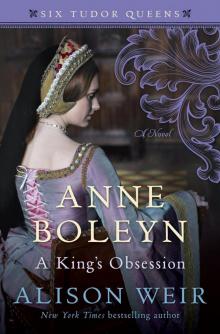 Anne Boleyn: A King's Obsession
Anne Boleyn: A King's Obsession Traitors of the Tower
Traitors of the Tower Mistress of the Monarchy: The Life of Katherine Swynford, Duchess of Lancaster
Mistress of the Monarchy: The Life of Katherine Swynford, Duchess of Lancaster Queens of the Conquest: England’s Medieval Queens
Queens of the Conquest: England’s Medieval Queens Eleanor of Aquitaine: A Life
Eleanor of Aquitaine: A Life Mary, Queen of Scots, and the Murder of Lord Darnley
Mary, Queen of Scots, and the Murder of Lord Darnley Henry VIII: The King and His Court
Henry VIII: The King and His Court Queen Isabella: Treachery, Adultery, and Murder in Medieval England
Queen Isabella: Treachery, Adultery, and Murder in Medieval England Katheryn Howard, the Scandalous Queen
Katheryn Howard, the Scandalous Queen Arthur- Prince of the Roses
Arthur- Prince of the Roses The Wars of the Roses
The Wars of the Roses Eleanor of Aquitaine: By the Wrath of God, Queen of England
Eleanor of Aquitaine: By the Wrath of God, Queen of England Mary Boleyn: The Great and Infamous Whore
Mary Boleyn: The Great and Infamous Whore Jane Seymour: The Haunted Queen
Jane Seymour: The Haunted Queen Anna of Kleve, the Princess in the Portrait
Anna of Kleve, the Princess in the Portrait Lancaster and York: The Wars of the Roses
Lancaster and York: The Wars of the Roses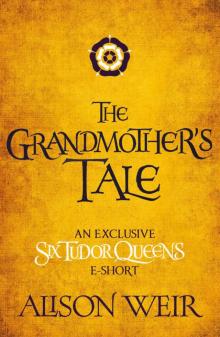 The Grandmother's Tale
The Grandmother's Tale The Princess of Scotland (Six Tudor Queens #5.5)
The Princess of Scotland (Six Tudor Queens #5.5) The Lady Elizabeth
The Lady Elizabeth Katherine Swynford: The Story of John of Gaunt and His Scandalous Duchess
Katherine Swynford: The Story of John of Gaunt and His Scandalous Duchess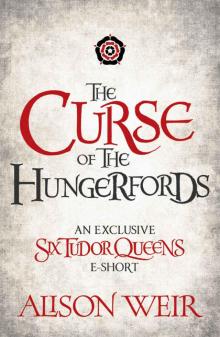 The Curse of the Hungerfords
The Curse of the Hungerfords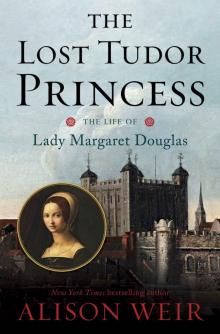 The Lost Tudor Princess: The Life of Lady Margaret Douglas
The Lost Tudor Princess: The Life of Lady Margaret Douglas Eleanor of Aquitaine
Eleanor of Aquitaine Mistress of the Monarchy
Mistress of the Monarchy The Lost Tudor Princess
The Lost Tudor Princess Henry VIII
Henry VIII Anne Boleyn, a King's Obsession
Anne Boleyn, a King's Obsession A Dangerous Inheritance: A Novel of Tudor Rivals and the Secret of the Tower
A Dangerous Inheritance: A Novel of Tudor Rivals and the Secret of the Tower Elizabeth of York
Elizabeth of York Katherine of Aragon, the True Queen
Katherine of Aragon, the True Queen Katherine Swynford
Katherine Swynford Wars of the Roses
Wars of the Roses Queens of the Conquest
Queens of the Conquest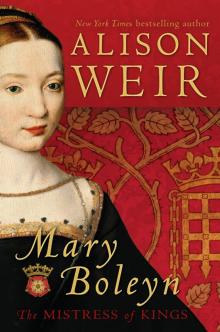 Mary Boleyn
Mary Boleyn Britain's Royal Families
Britain's Royal Families The Tower Is Full of Ghosts Today
The Tower Is Full of Ghosts Today Life of Elizabeth I
Life of Elizabeth I Anne Boleyn A King's Obssession
Anne Boleyn A King's Obssession Lancaster and York
Lancaster and York Jane Seymour, the Haunted Queen
Jane Seymour, the Haunted Queen Queen Isabella
Queen Isabella The princes in the tower
The princes in the tower